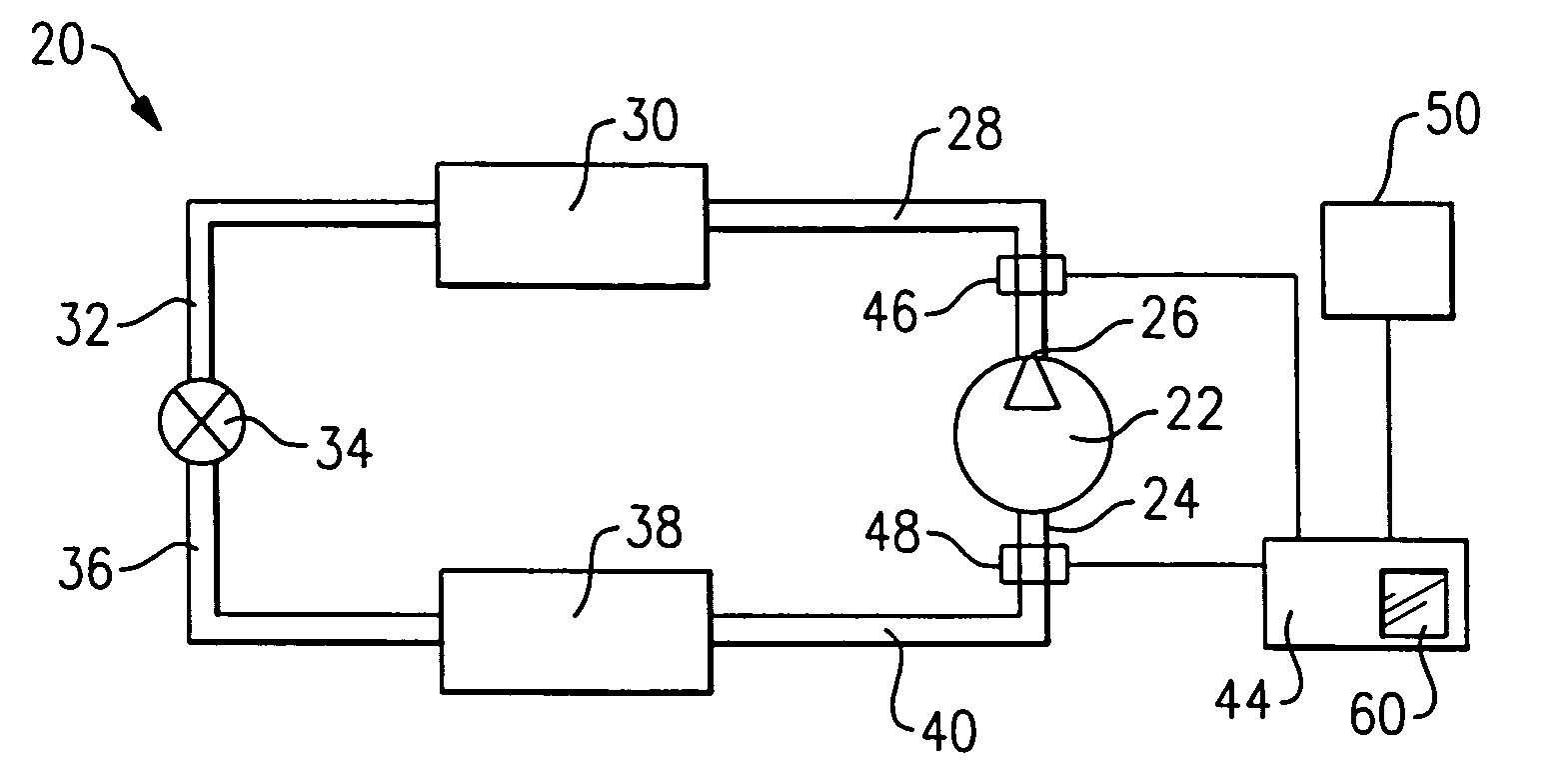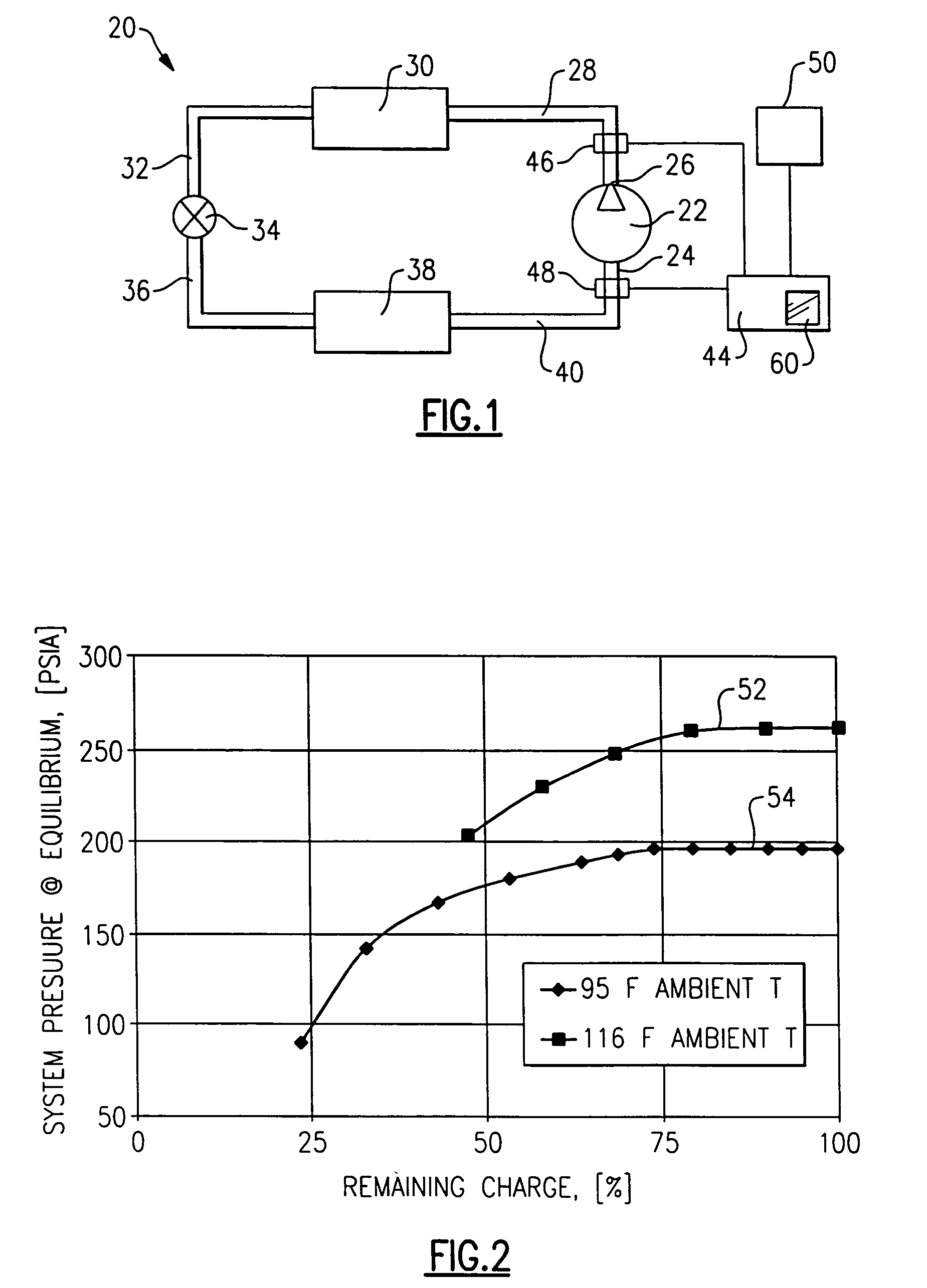Diagnosing a loss of refrigerant charge in a refrigerant system
a technology of refrigerant system and refrigerant charge, which is applied in the field of refrigerant system loss, can solve the problems of system loss of refrigerant charge, interruption of customer service, loss of cooling capacity,
- Summary
- Abstract
- Description
- Claims
- Application Information
AI Technical Summary
Benefits of technology
Problems solved by technology
Method used
Image
Examples
Embodiment Construction
[0015]FIG. 1 schematically shows a cooling circuit 20 that is part of an air conditioning system, for example. A compressor 22 draws refrigerant through a suction port 24 and provides a compressed refrigerant under pressure to a compressor discharge port 26. The high temperature, pressurized refrigerant flows through a conduit 28 to a condenser 30 where the refrigerant gas rejects heat and usually condenses into a liquid as known. The liquid refrigerant flows through a conduit 32 to an expansion device 34.
[0016]In one example, the expansion device 34 is a valve that operates in a known matter to allow the liquid refrigerant to partially evaporate and flow into a conduit 36 in the form of a cold, low pressure refrigerant. This refrigerant flows through an evaporator 38 where the refrigerant absorbs heat from air that flows across the evaporator coils, which provides cool air to the desired space as known. Refrigerant exiting the evaporator 38 flows through a conduit 40 to the suction...
PUM
| Property | Measurement | Unit |
|---|---|---|
| temperatures | aaaaa | aaaaa |
| temperatures | aaaaa | aaaaa |
| temperature | aaaaa | aaaaa |
Abstract
Description
Claims
Application Information
 Login to View More
Login to View More - R&D
- Intellectual Property
- Life Sciences
- Materials
- Tech Scout
- Unparalleled Data Quality
- Higher Quality Content
- 60% Fewer Hallucinations
Browse by: Latest US Patents, China's latest patents, Technical Efficacy Thesaurus, Application Domain, Technology Topic, Popular Technical Reports.
© 2025 PatSnap. All rights reserved.Legal|Privacy policy|Modern Slavery Act Transparency Statement|Sitemap|About US| Contact US: help@patsnap.com


